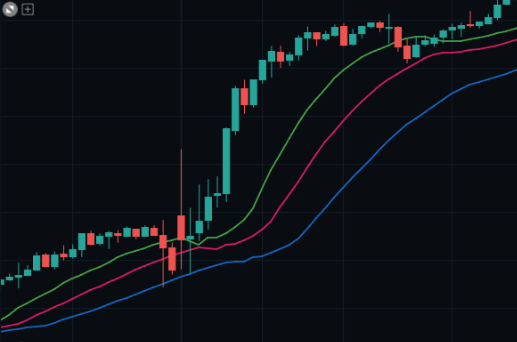Categories
About UsHow to get startedAccount AccessBrokers and TradingScannersResearch ToolsCommunityStocksOptionsFuturesAlertsMobile AppWilliams Alligator - Indicator Formula
The Williams Alligator was developed by Bill Williams under the premise that financial markets trend only 15% to 30% of the time, while trading in sideways or non-trending markets for 70% - 85% of the time. The Williams %R Alligator uses the convergence-divergence of three Smoothed Moving Averages which are the 5, 8, and 13-period Simple Moving Averages.
The 5-period moving average is called the Lips.
The 8-period moving average is called the Teeth.
The 13-period moving average is a called Jaw.
The Jaw, being the longest moving average of the three, makes the slowest turns and the Lips, being the shortest, making the fastest turns.
When the Lips (5-period moving average) cross down through the other lines it signals bearish opportunity.
When the Lips (5-period moving average) cross up through the other lines it signals a bullish opportunity.
The simple moving average (SMA):
SUM1 = SUM( CLOSE, N )
SMMA1 = SUM1 / N
Subsequent values:
PREVSUM = SSMA( t - 1 ) * N
SMMA( t ) = PREVSUM - SMMA( t - 1 ) + CLOSE( t ) / N
Where:
SUM1 = the sum of closing prices for N periods
PREVSUM = smoothed sum of the previous bar
SMMA1 = smoothed moving average of the first bar
SMMA( t ) = smoothed moving average of the current bar (except for the first one)
CLOSE( t ) = current closing price
N = the smoothing period
